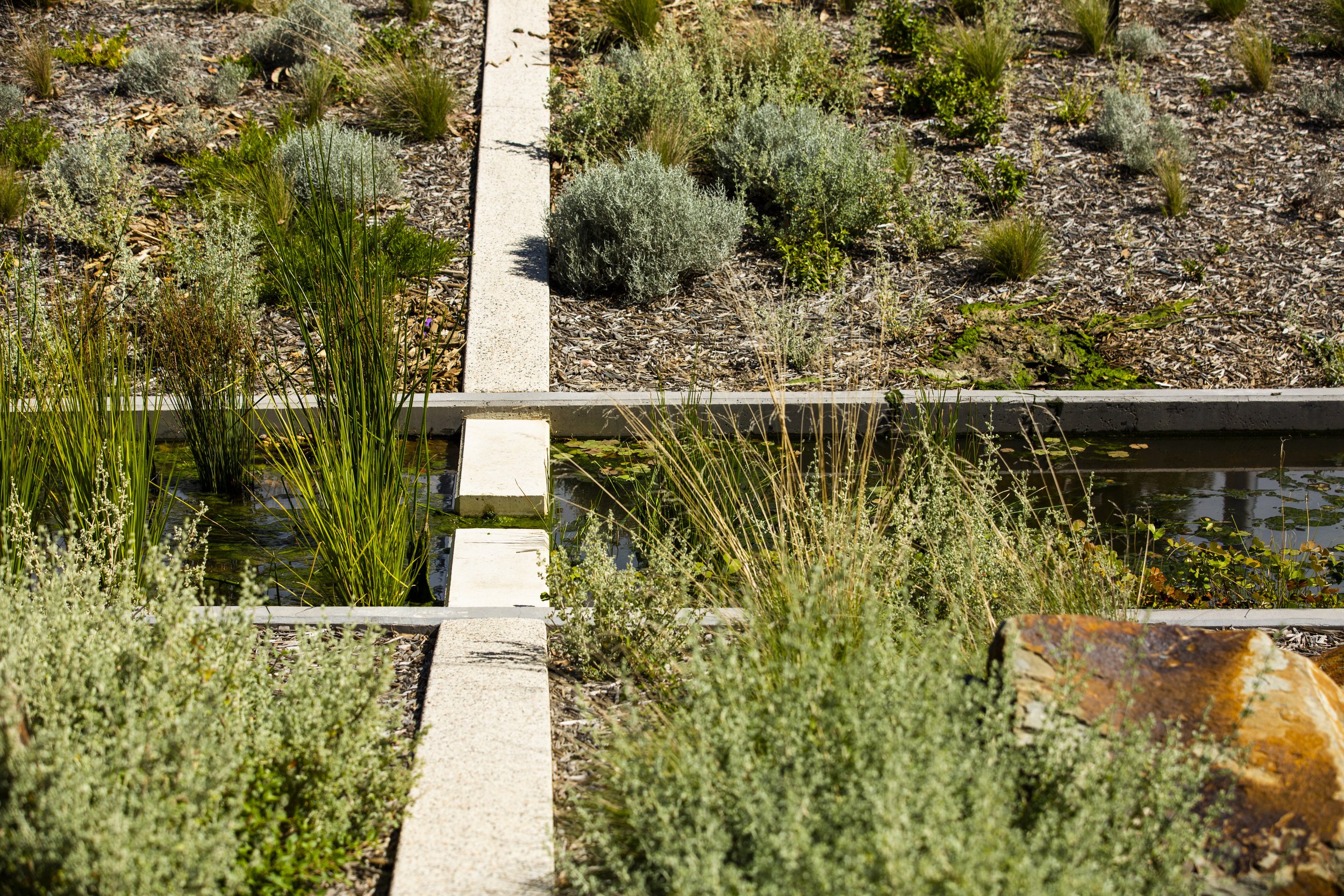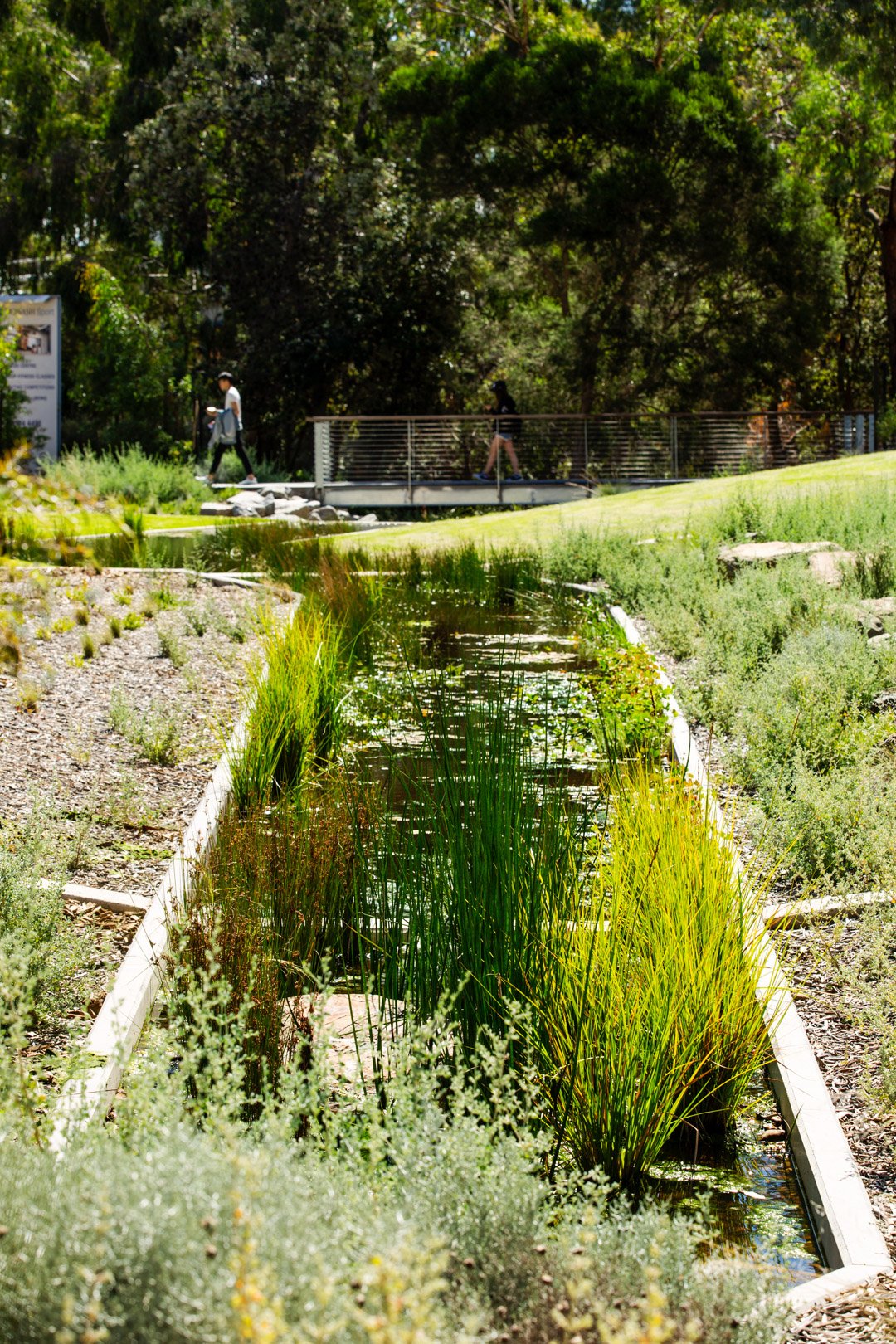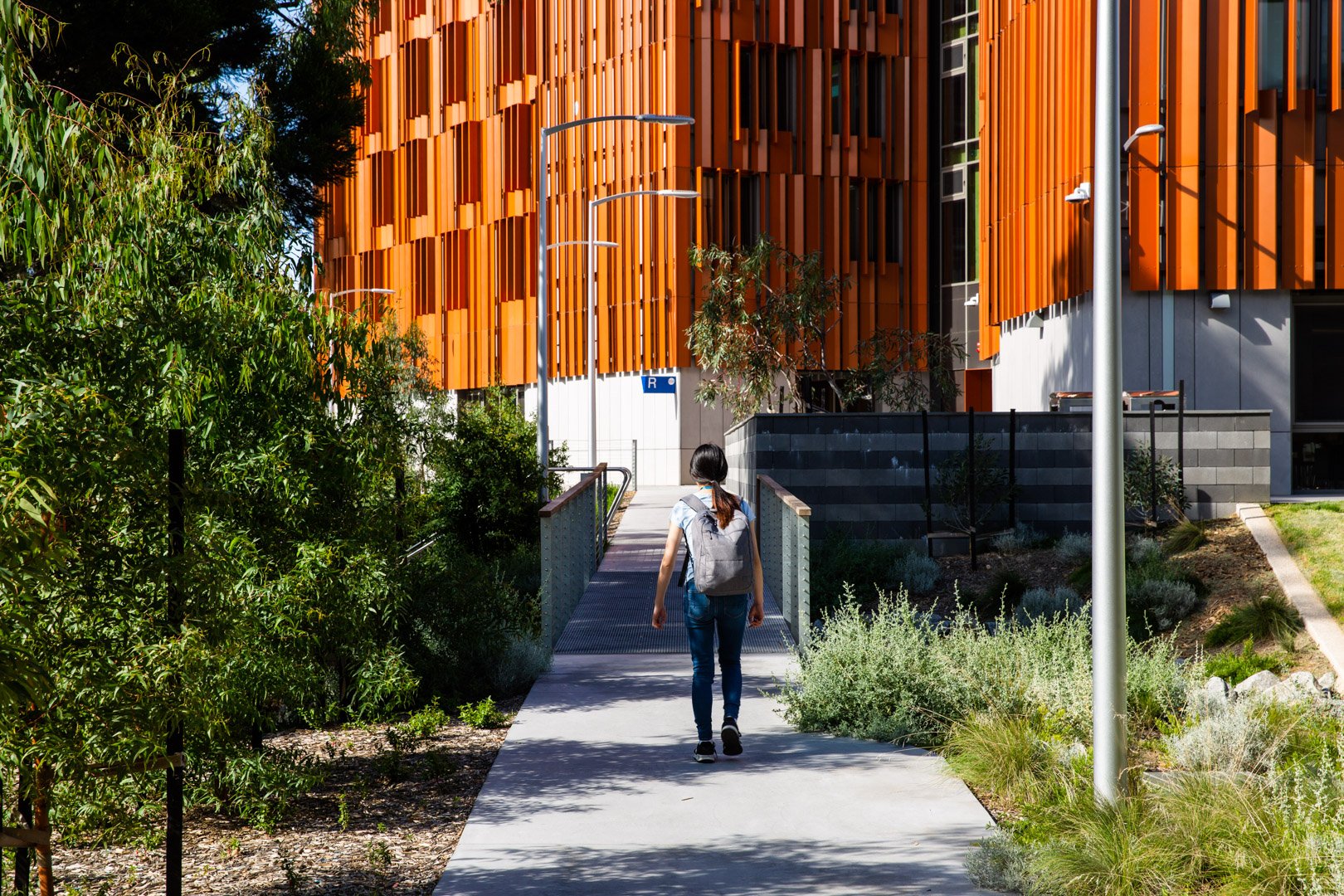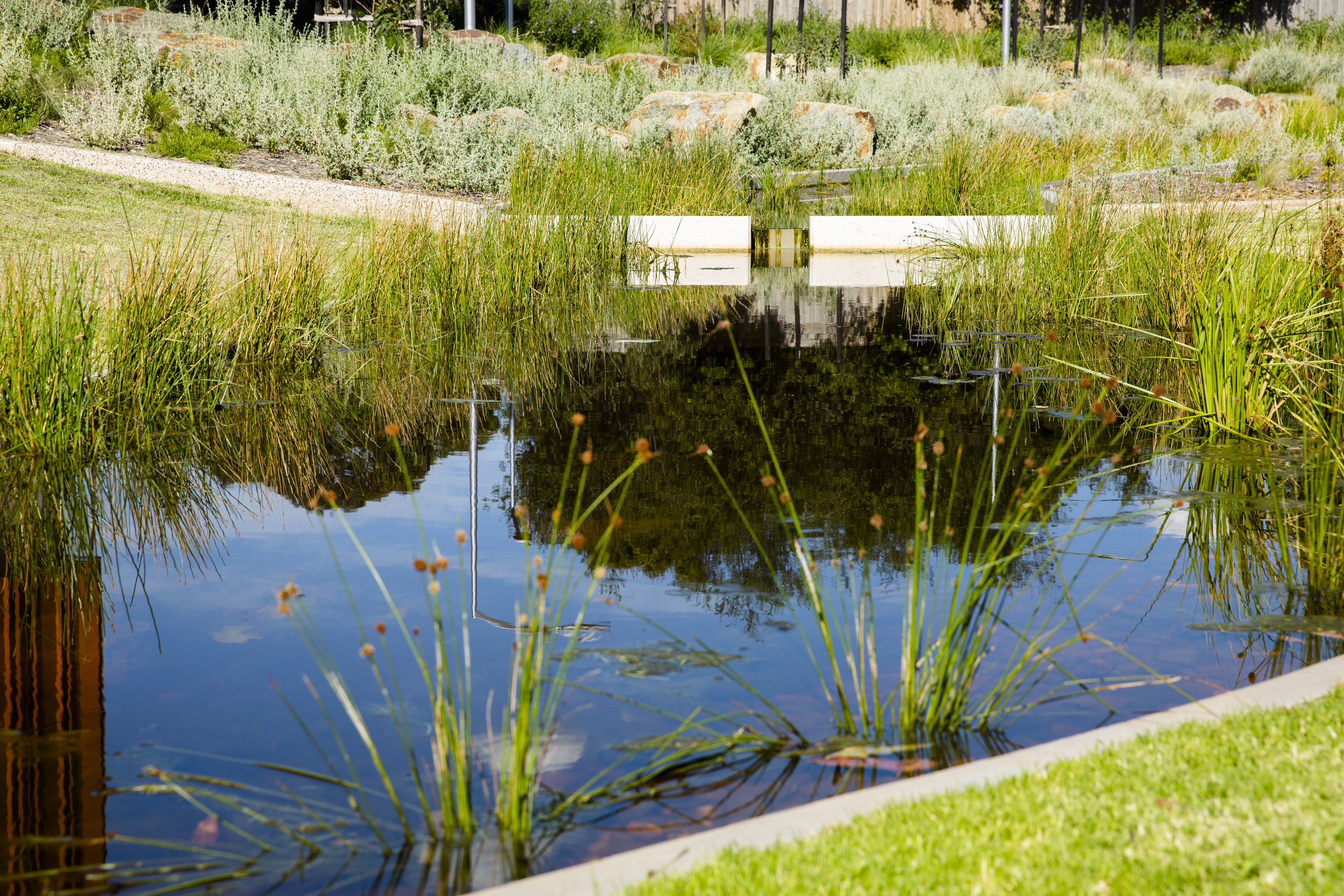Peninsula Valley Creek Restoration
GLAS Landscape Architects was engaged to provide landscape design expertise for the Warrnambool Learning and Library Centre in 2019, working as a sub-consultant to Kosloff Architecture. The scope of the project focuses on the external spaces surrounding the hub, with a design aimed at integrating the new facilities into the existing TAFE campus and connecting them to the surrounding town, all while reflecting the local coastal environment and historical conAt the heart of the landscape concept is a desire to create spaces that not only function well but also connect people to nature and each other. The design takes cues from the coastal landscape, with its sand dunes, rock outcrops, and indigenous plant life, to inform everything from the material choices to the arrangement of planting and seating. The iconic Norfolk Island Pines that frame the entrance stand as sentinels, welcoming visitors into a civic plaza where the boundary between hard surfaces and soft greenery is intentionally blurred, encouraging exploration and casual interaction.
A creek hidden under the ground in a culvert, has been brought back to the surface as the centre piece for the landscape associated with a new student residence at Monash University.
In 2016, GLAS Landscape Architects developed the Monash University Peninsula Campus Masterplan with Lyons and NMBW. A key component of the landscape vision was the creation of strong landscape character zones, emanating from a restored creek running through the existing central valley of the campus. Delivering on Masterplan ambitions, GLAS has restored the creek back to the surface, allowing it to visibly run through the landscape for the first time in over 100 years.
The creek system provides a 3-stage water filtration process. The first stage is an underground tank; here the siphoned water passes into a sediment tank where major sediment separates from the water. Next the water emerges into a series of surface pools separated by weirs. The second stage is a wetland pool with a dense reedbed, designed to remove smaller sediment and nutrients. In stage three, water runs through an open creek bed with intermittent planting, which provides a final clean prior to it passing into the large pool area adjacent the lawn.
Traditional Custodians
Bunurong/ Boonwurrung
Location
Frankston, VIC
Scale
5,000 sqm
Year
2019
Client
Monash University
Team
JCBA
DesignFlow
AECOM
Monash University
Awards
2020 AILA Victoria Landscape Architecture Award for Parks and Open Space







Water System
The water system at Monash University’s Peninsula Campus follows a six-step process: (1) Water is siphoned from the existing stormwater drain through a diversion; (2) it enters a sediment tank where coarse pollutants are removed; (3) the water then flows into a wetland area where reeds and soil filter out excess nutrients; (4) diverse planting around the wetland promotes biodiversity by creating habitats; (5) the water finally emerges into a shallow pool, highlighting the rediscovered creek; and (6) future plans aim to extend the creek through the entire campus, enhancing its ecological and visual impact.
BEFORE: Melbourne Water Drain, Carpark
AFTER: New Valley Creek and Plateau Walk
Planting
-
Over 100 new trees were planted, with most mature trees retained, enhancing biodiversity, providing shade, and improving air quality.
Soil
-
Transforming a former carpark into a site where more than half is dedicated to soft planting, the project has significantly increased deep soil areas, promoting healthier plant growth and improving overall soil quality.
Carbon
-
This campus leads in sustainability, help sequester carbon, (equivalent to almost 1 lap driving around Australia) and reduce the urban heat island effect, contributing to the university's ambition for a net-zero carbon campus by 2030.
Water
-
Previously prone to flooding, the site now benefits from improved stormwater management through ‘daylighting’ the creek. This not only creates a cooling effect in adjacent spaces but also connects the campus to the broader Kananook Creek catchment and Port Phillip Bay.
Biodiversity
-
The project links the nearby nature reserves, promoting habitat connectivity and supporting local ecosystems. Extending key landscape typologies to strengthen the ecological network on campus.











